
Take Out Supplies 101: The Ultimate Guide
Do you like getting food delivered? We all do because it’s super convenient to enjoy our favorite dishes at home or when we’re out and about. But have you ever wondered about the materials that make it all work? The boxes that keep your food hot and fresh so that you can savor every bite?
In this guide we’re going to break down everything you need to know about takeout supplies.
What are Takeout Supplies?
Takeout supplies make it possible for you to enjoy restaurant food outside the restaurant. They include containers for your food, utensils for eating, drinkware for your beverages, napkins for staying neat, and more. These supplies ensure that your meal stays fresh and enjoyable, whether you’re eating it at home, in the park, or at work.
Why are They Important?
Imagine getting a fresh, tasty pizza that you ordered via online delivery in a flimsy cardboard box that breaks or without any utensils. Takeaway supplies are important because they keep your food fresh, shield it from spills, and improve the quality of your eating experience. Additionally, they are crucial for maintaining hygiene and food safety.
To help you choose wisely and make the most of your takeaway experience, we’ll go into detail about each component of takeaway supplies in the sections that follow.
Food Containers
Types of Food Containers
Food containers come in many shapes and sizes, and they’re crucial for keeping your food fresh and safe. You’ll encounter options like:
- Styrofoam containers
- Plastic containers
- Cardboard boxes
- Eco-friendly options
- Microwavable Containers
- Deli Containers
- Foil Containers
Styrofoam Containers
Styrofoam containers, typically made from expanded polystyrene (EPS), play a pivotal role in preserving and transporting temperature-sensitive items.
EPS effectively traps heat, making it an ideal choice for keeping hot foods hot and cold foods cold. This not only ensures that meals are served at the desired temperature but also reduces food waste by prolonging shelf life.
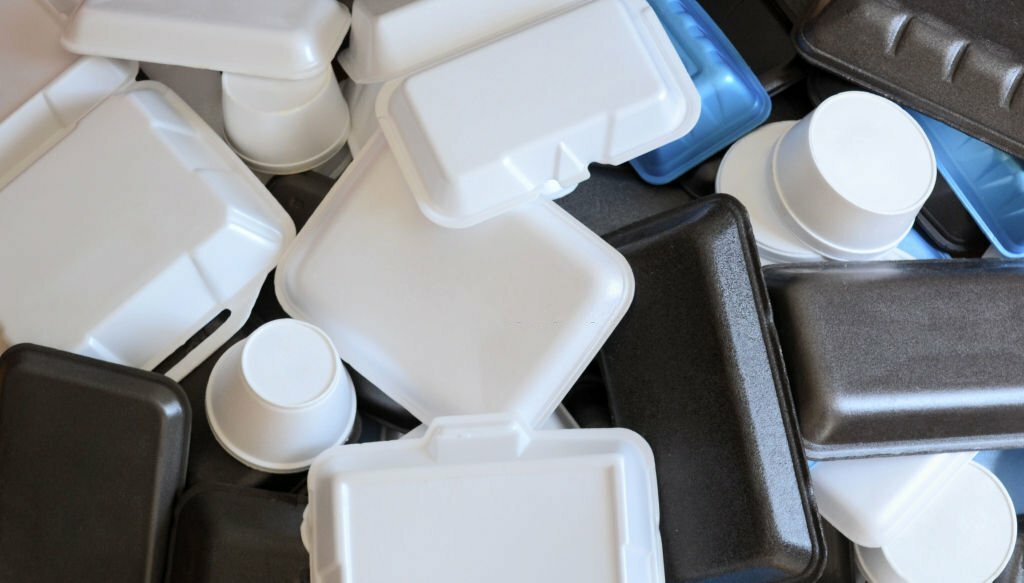
Plastic Containers
Plastic containers have become indispensable in modern life due to their versatility and durability. These containers are often composed of various plastic polymers, such as polyethylene and polypropylene, that offer remarkable chemical resistance.
This property ensures that the contents are securely stored without any risk of chemical contamination.
Furthermore, their lightweight and cost-effective nature make them an essential choice for packaging and transport.
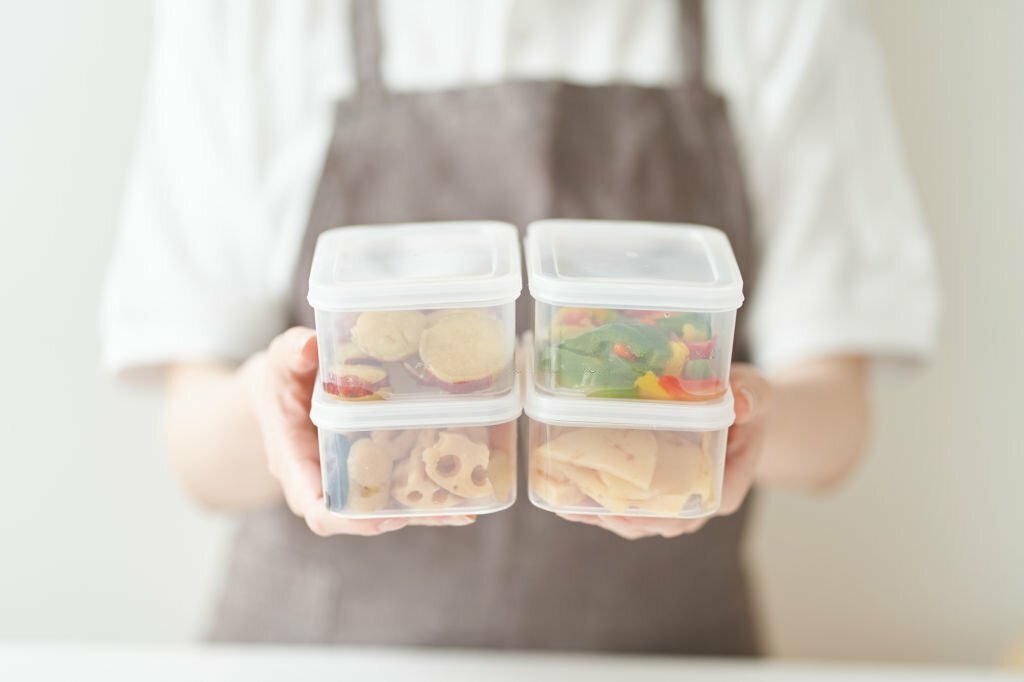
Microwavable Containers
Microwavable containers, usually made from microwave-safe plastics like polypropylene or polyethylene, are essential in today’s kitchens.
These materials are picked because they can go in the microwave without releasing harmful stuff into your food. So, when you warm up your leftovers or cook something, you don’t need to worry about harmful chemicals getting in your meal. These containers are also super handy. They seal tight and have lids with holes to let steam out.
This means your food heats up evenly, and you won’t make a mess in the microwave.
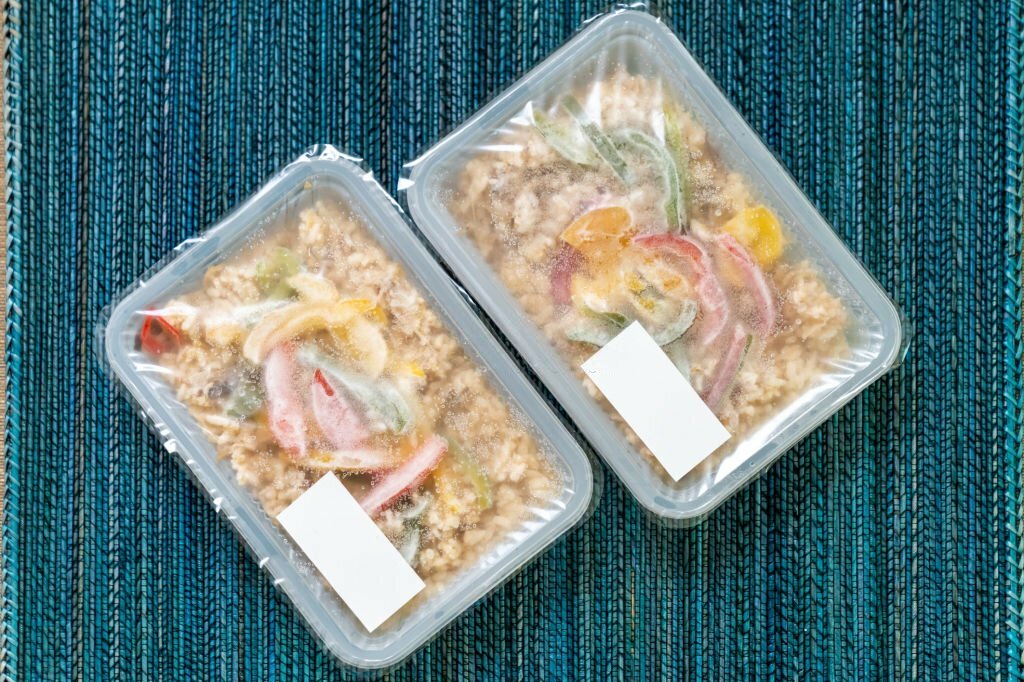
Deli Containers
Deli containers, typically crafted from food-grade plastics like polypropylene or PET, are indispensable for safely storing and preserving a wide range of perishable items in delis, restaurants, and home kitchens.
These containers are specifically chosen for their resistance to chemical reactions, ensuring that acidic or oily contents won’t react with the material and compromise the integrity of the stored food.
Deli containers are not only durable and leak-resistant but also transparent, allowing for easy identification of the contents.
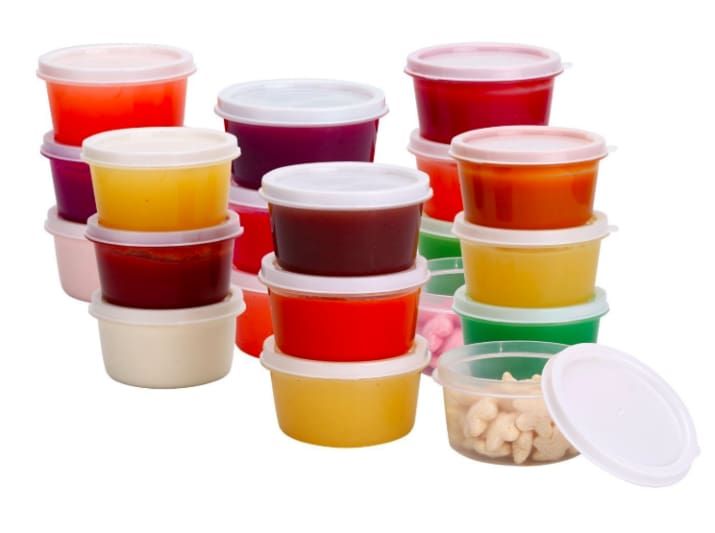
Foil Containers
Foil containers are invaluable for their chemical stability and heat-retention properties. These containers are typically crafted from aluminum, a metal that is non-reactive and resistant to corrosion.
This makes them an ideal choice for storing and cooking acidic or heavily seasoned foods, as they won’t alter the taste or composition of the contents. The exceptional heat conductivity of aluminum also allows for uniform and efficient heating, ensuring that food is cooked or reheated evenly.
Foil containers are commonly used for baking, grilling, and roasting, as they can withstand high temperatures without deforming or releasing harmful chemicals.
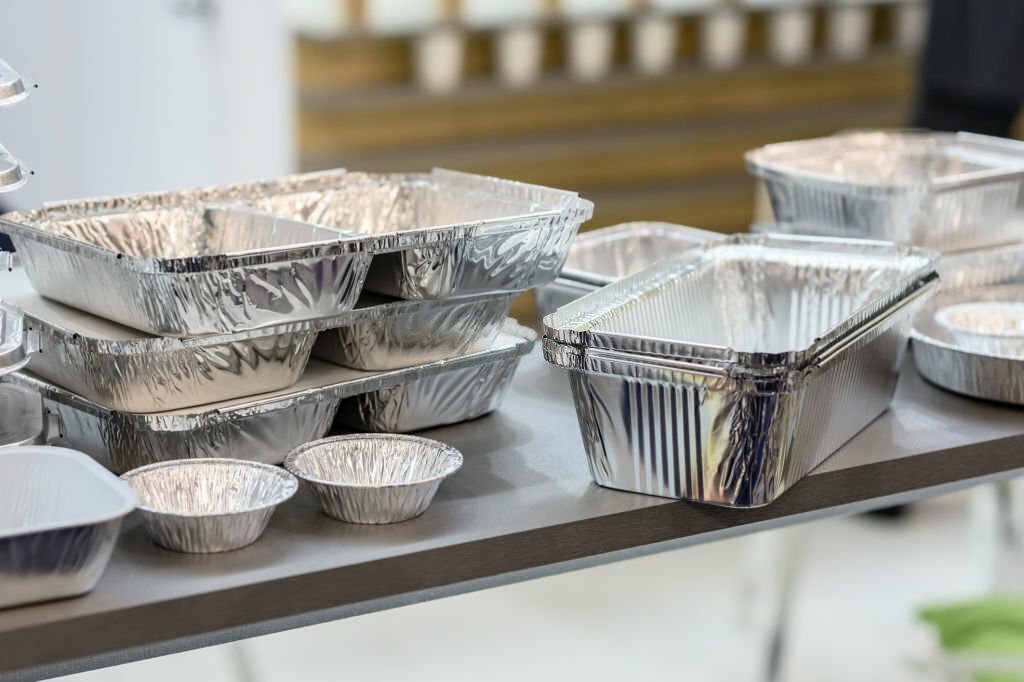
Cardboard Boxes
Cardboard boxes are essential in packaging and shipping industries due to their strength, affordability, and chemical safety. These boxes are typically made from several layers of paperboard, often with a corrugated structure.
This construction offers excellent protection for a wide range of products without exposing them to harmful chemicals. Cardboard is pH-neutral, ensuring it won’t react with or contaminate the contents. Additionally, its rigidity and cushioning properties make it perfect for safeguarding fragile items during transportation.
Moreover, cardboard boxes are highly recyclable and sustainable, reducing their environmental footprint.
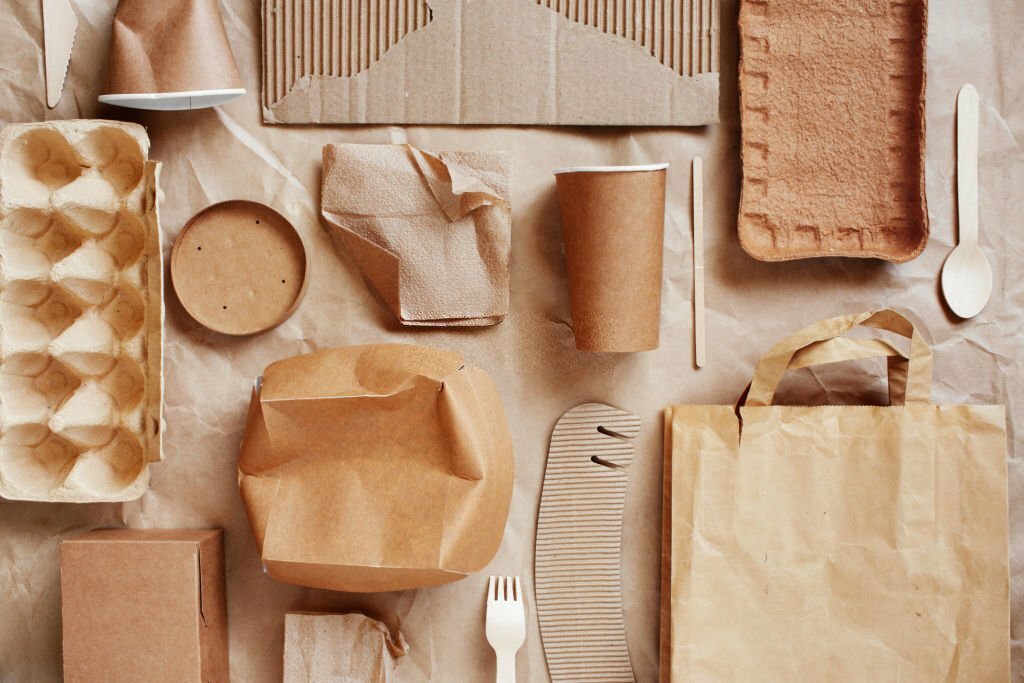
Paper Soup Cups and Bowls
Make it easy for your customers to take the flavors of your soup bar home with paper soup cups and bowls. Since they offer better insulation than their plastic counterparts, paper soup cups are ideal for salad and snack bars where contents will be consumed while still hot. Lids are available for patrons transporting soup before consumption.
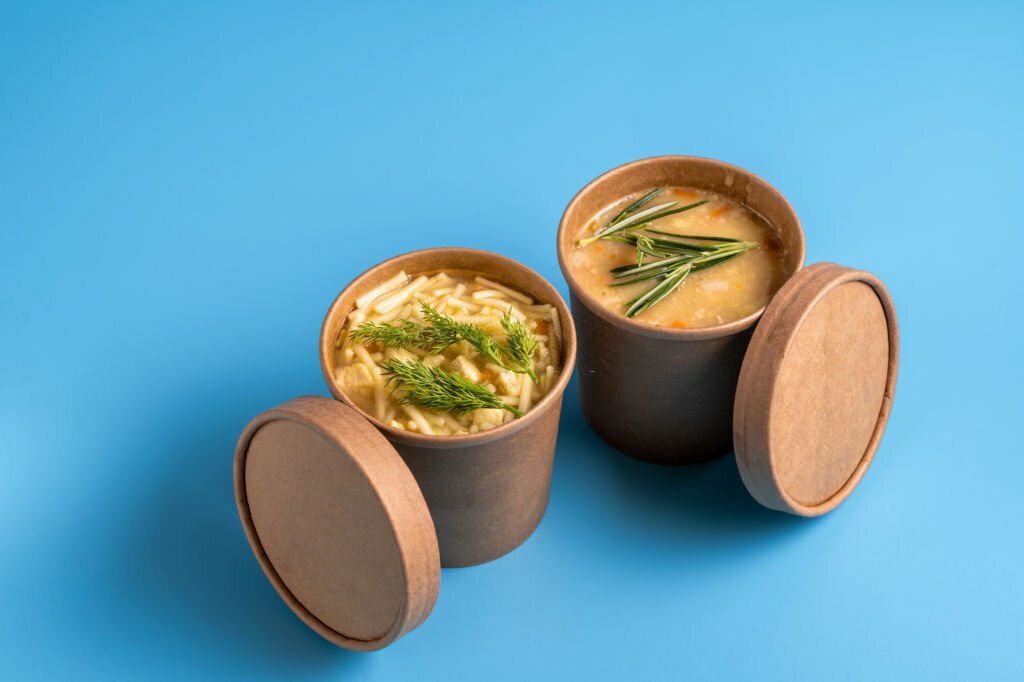
Takeout Container Materials
Takeout container materials play a crucial role in the food service industry, ensuring the safe and convenient delivery of meals. These materials are carefully selected based on their unique properties:
Foam
Foam, typically expanded polystyrene (EPS), excels in its insulating properties, making it ideal for both hot and cold foods. These containers effectively retain temperature and prevent leakage.
Plastic
Containers often made from polypropylene or PET, are lightweight,
durable, and resistant to moisture. Their transparent nature allows customers to easily identify the contents. They are particularly useful for cold and room-temperature foods. However, concerns regarding plastic pollution and potential chemical leaching have led to an increased demand for more sustainable options.
Biodegradable
An increasingly favored choice, biodegradable containers are made from materials like PLA (polylactic acid) or sugarcane fiber. They decompose naturally, reducing environmental impact.
Foil
Containers made from foil are resistant to high temperatures and protect food effectively. Aluminum is also recyclable, reducing environmental concerns, making foil containers a versatile and sustainable option for certain types of takeout food. However, they may not be as transparent as plastic or cardboard, limiting the ability to see the contents.
Choosing the right takeout container material depends on the type of food, temperature requirements, and environmental priorities.
Which Container to Use for Different Foods
The type of food you’re ordering can determine the best container. For example, pizza is often placed in cardboard boxes because they keep it warm and fresh. On the other hand, soups are typically packed in plastic or Styrofoam containers to prevent leaks.
Eco-Conscious Choices
Look for establishments that offer cloth napkins or biodegradable options. They’re kinder to the environment. Eco-conscious choices can have a significant positive impact on the environment. When you’re ordering takeout, make an effort to choose establishments that prioritize sustainability. Look for those that offer reusable or biodegradable options for their packaging and utensils. By selecting these eco-friendly alternatives, you’re not only reducing the harmful environmental impacts of your meal but also supporting businesses that care about the planet. Biodegradable options break
down naturally, reducing the burden on landfills, while cloth napkins can be washed and reused, further minimizing waste. Your choice in eco-conscious options can contribute to a cleaner and greener future for all.
Takeout Bags: Types and Sizes
Takeout bags come in all shapes and sizes. Some are made of paper, while others are made of plastic. The choice depends on the type of food and how much you’re carrying.
Going Green with Reusable Bags
You can reduce waste by using reusable shopping bags for your takeout. Many restaurants and delivery services support this eco-friendly option.
How to choose the right takeout container?
It’s important to pack up your takeout or delivery orders in their proper containers to keep them intact during transport and prevent messes. If you’re packaging large entrees, bagasse take out containers or paper take out boxes are great for sealing in your dishes without allowing grease to seep through. For soups and ice creams, bamboo or paper to go cups with lids lock in your hot or cold treats to keep them at their perfect temperature. For small desserts, like chocolate chip cookies or brownie bites, paper treat bags are perfect for separating your sweet treats from your main course
Where to Buy Takeout Supplies
Local Suppliers
Local restaurant supply stores are a good place to find takeout supplies, and you can often get personalized service, allowing you to discuss your needs and get tailored recommendations. You can see products in person and immediately access the supplies you require, supporting local businesses in your community.
Online Retailers
Online retailers offer a wide variety of options and allow you to shop from the comfort of your home. They provide a vast selection of products, making it easy to find what you need. You can order from your home at any time, compare prices, and take advantage of various shipping options.
Wholesale vs. Retail
Buying in bulk, especially if you run a business, can save you money. Many online retailers offer wholesale prices. Wholesale suppliers sell items in bulk at lower prices per unit, making it ideal for larger businesses. Retail sources offer smaller quantities and are better for individuals and smaller businesses. Consider your scale and budget when deciding between wholesale and retail sources for your takeout supplies.
Conclusion
In this ultimate guide, we’ve covered everything you need to know about takeout supplies. These supplies make your takeout experience convenient and enjoyable.
Remember to consider environmental factors and choose eco-friendly options when possible. Safety and hygiene are crucial, and contactless delivery has become more important due to the ongoing pandemic.
Whether you’re a food lover enjoying takeout or a business owner looking to enhance your brand, takeout supplies play a vital role in making the experience complete. So, the next time you order your favorite meal, you’ll have a better understanding of the essential supplies that make it all possible. Enjoy your takeout!
Frequently Asked Questions
To properly package your delivery menu, merchandise your goods and run a drive-thru, you must have high-quality disposable takeaway containers. Takeaway containers are useful for more than just keeping food; they keep it hygienic and maintain temperatures that are suitable for consumption.
Food containers from takeaway are likely safe to be left there. The secret is to keep food chilled in a shallow container that can be sealed. These procedures aid in limiting bacteria.
The ability to recycle takeout containers depends on the material; while some plastics may not be recyclable, paper and cardboard frequently are. For proper disposal, check your local recycling regulations. A more sustainable approach is to reduce single-use items and opt for eco-friendly options.
A takeout container is a type of food packaging designed for consumers to enjoy meals elsewhere. They come in different shapes and materials like plastic, cardboard, or styrofoam. Takeout containers are a common choice for food on-the-go or for leftovers.
Materials used to make containers for takeout can affect their microwave safety. While some plastics and foam containers may or may not be microwave-safe, paper and cardboard containers are typically suitable for brief microwave use. To prevent any problems, always look for microwave-safe labelling and adhere to any given instructions.

